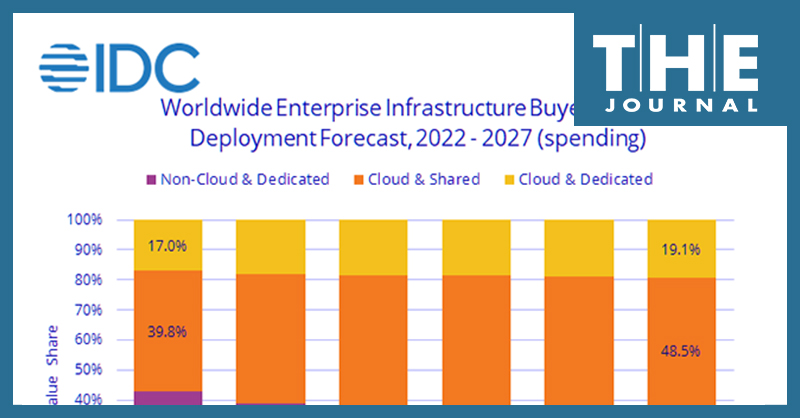
Worldwide IT spending is projected to increase 5.5% this year to a total of $4.6 trillion by the close of 2023, according to the latest forecast by market researchers at Gartner, while IDC analysts detailed a decline in spending on non-cloud infrastructure and devices but project significant growth in cloud infrastructure spending.
Two prominent education technology-focused associations have teamed up to ask the Federal Communications Commission to extend service delivery dates for the Emergency Connectivity Fund.
A Funds For Learning E-rate expert shares what K–12 procurement officers and IT leaders need to know so they can be prepared to apply for the expanded funds if and when the FCC decides to expand the E-rate eligible services list — particularly if the expansion plan of choice means that the amount of E-rate funds to cover modern cybersecurity services is limited, at least for the first few years.

A technology educator shares how her nonprofit is using ChatGPT to help students participating in Technovation programs go further in their brainstorming and ideation as they aim to develop AI-based solutions to real-world problems. Here’s a concrete example from our program: Students in one group were interested in developing technology-based solutions to food wastage and conservation, encouraging more students to read, exercise, and be more inclusive.
Blackbaud, a South Carolina-based provider of administrative, donor management, and CRM software to education and nonprofit organizations, has been fined $3 million by the U.S. Securities and Exchange Commission "for making misleading disclosures about a 2020 ransomware attack that impacted more than 13,000 customers,” the federal agency said.

Expanded multi-modal MathGPT Platform possibilities mean any math content or curriculum can be turned into a personalized GPT-powered chatbot with interactive text, audio, and video learning, and GotIt can configure the MathGPT Platform to work with a wide variety of applications in math education, the company said.
A collaboration of ed tech providers led by nonprofit 1EdTech Consortium has resulted in an updated open standard for interoperability that allows K–12 school districts to automatically combine assessment results and grades from districts’ various platforms and tools, enabling teachers and administrators to see all their students’ results data in one place.
Augmented and virtual reality headsets experienced a double-digit decline over the last year. Worldwide, AR/VR headset manufacturers shipped 8.8 million units in all of 2022, down 20.9% over the previous year, according to a new report.
One of the few bright spots for tablet and PC manufacturers is schools, as the overall market for these computing devices is expected to fall 11.2% this year, reaching 2019 levels.
The security appliance market saw a substantial increase year over year, with five manufacturers dominating in the fourth quarter of 2022.